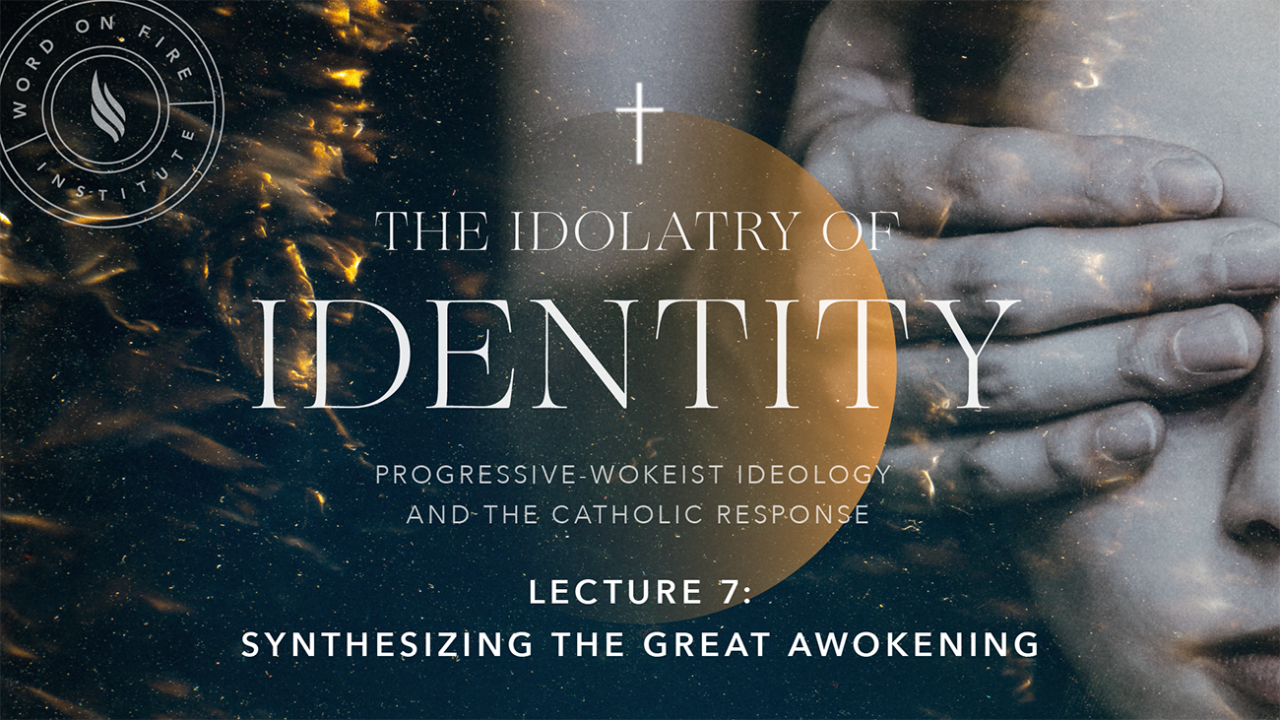Employees in corporate business, higher education, entertainment, marketing, journalism, or any other field belonging to what has fittingly been described as the “laptop class” of American society are likely familiar with the letters “D.E.I.,” standing for “Diversity, Equity, and Inclusion.” The acronym is now as much a part of the professional lexicon as “risk management,” “synergy,” “innovation,” “optics,” “leverage,” or “sustainability.”1 But what does it mean? If you’ve ever been compelled to take “Diversity Training” (an eight-billion-dollar-per-year industry), you’ve probably noticed that D.E.I. training, unlike other forms of on-the-job education, doesn’t teach technical skills, like how to implement new software. Rather, “diversity trainers” seek to imbue an entire progressive ideological worldview, one that not only includes normative moral and political principles but also an entire vocabulary of both prohibited and permitted words, like that which Stanford University recently released.
Although promulgated as “D-E-I”, the more accurate ordering of the terms—and I note this (mostly) without tongue in cheek—is “D-I-E,” standing for “Diversity,” “Inclusion,” and “Equity.”2 This ordering is more apt because there is a hierarchical relationship among the concepts underlying each term: “diversity” is the foundational idea upon which “inclusion” is built, and “inclusion,” in turn, is necessary to understand and apply the meaning of “equity.” Although different institutions have different specific definitions, the basic substance and logic of “D-I-E” is this:
1. Diversity:
There are manifold differences among human beings that are either empirically observable (capable of being externally perceived—e.g., race, age, biological sex, etc.) or able to be known by self-disclosure (e.g., sexual attraction, country of origin, religion, socio-economic status, etc.). These differences constitute the foundational fact that “inclusion” and “equity” respond to.
2. Inclusion:
Diversity is not only a descriptive phenomenon for the D.I.E. worldview; it also describes a moral problem that needs to be addressed. “Inclusion” is the putative solution to this problem. It takes this form: the goal of every community should be to include “diversities” with the goal of maximizing (certain kinds of) diversity within the community.
3. Equity:
“Inclusion” describes what to do with the problem of diversity (i.e., include it); “equity” describes both the means (the how) to achieve an inclusive community and the standard that defines the maximally inclusive community. It takes this form: to be maximally inclusive, every community should ensure that the community’s power distribution and benefits—the outcomes—be equalized among the forms of diversity in the community, so that no group enjoys greater power or benefits than any other group. Crucially, the metric for determining this distribution of goods is not related to group members’ individual actions (e.g., how much revenue they produce for the company) but, rather, their external or internal diversities as described above.
For D.I.E. ideology, in short, the goal of every community—whether it be an academic department, a factory floor, a corporate board, a pod of software coders, or a platoon of soldiers—is to maximize the inclusion of diversity within the community. The test whether the community is attaining this goal is whether it is “equitable”—that is, whether it is distributing power and benefits equally among the forms of diversities included within the community.
There are numerous intellectual and moral problems with this ideology, but here’s one that the ideology itself recognizes and attempts (unsuccessfully) to fix: How should communities establish a limiting principle on the types of “diversity” that the community ought to include? Should, for example, height and weight count as forms of diversity? Being bald? Having green eyes (green eyers are only 2% of the human population)? Being a vegan? Identifying as trans-species within an “otherkin community”? In response to the need to demarcate types of diversity that morally count and types of diversity that don’t—an act of exclusion—D.I.E. ideology applies “oppression” and “privilege” as sorting principles: those who belong or claim to belong (remember: “diversity” includes self-identification) to groups that have been or are oppressed and therefore lack privilege have the greatest claim (a) to be included within the community by virtue of their identity, and, consequently, (b) to have the community’s power and benefits distributed to them on account of their identity.
The problem, however, is that it’s profoundly challenging, both historically and sociologically, for D.I.E. ideology to sort through, catalog, and establish cause-and-effect relationships among all the different kinds of oppression and privilege among all the different kinds of diversities. This difficulty is compounded by the fact that D.I.E. ideology allows for and even encourages subjective self-identification with “intersecting” identity groups each claiming the mantle of oppression (e.g., combining racial, gender-identity, sexual, national origin, and religious identities into a new singular form of “diversity” that claims it has been / is oppressed). D.I.E. thus needs one simplified form of oppression and privilege that it can use to determine which forms of diversity are valid (and thus deserve inclusion and equitable resource distribution) and which forms of diversity are not valid and, therefore, can be safely excluded from the community and its full benefits. In other words, D.I.E. needs a “them” (the menacing other) to have a fixed foil against which to define the “us” (the diverse, inclusive community). And which collection of individuals fits that criterion for D.I.E.? White, heterosexual (more broadly non-“queer”), able-bodied, Christian males.
D.I.E. thinking is a paradigmatic example not only of guilt by association but guilt by existence.
To recognize this fact is not to embrace online crankery, wallow in self-pitying reverse victimhood, or endorse conservative or Republican politics. It is to cite, verbatim, actual corporate policies, usually embedded in, and enforced by, human resource departments. The journalist and activist Christopher Rufo has made a career out of publicly exposing these policies. Here, for example, is D.I.E. ideology in action at the $100+ billion defense corporation, Raytheon. According to Rufo (who provides access to the source documents),
Raytheon asks white employees to deconstruct their identities and “identify [their] privilege.” The company argues that white, straight, Christian, able-bodied, English-speaking men are at the top of the intersectional hierarchy—and must work on “recognizing [their] privilege” and “step aside” in favor of other identity groups.
Note here—in one of many examples—how D.I.E. policy essentializes and consolidates all putatively unjust power (i.e., being on top of the “intersectional hierarchy”) and “privilege” into a single racial, gender, and religious group independently of whether the individuals in that group have ever (a) personally acted unjustly towards a member of any other group, and/or (b) ever enjoyed any concrete benefit specifically due to their “privileged” characteristics. In other words, according to Raytheon and D.I.E. ideology more broadly, being white (assuming we can even know what that means—the children in our family, for example, have my Hispanic wife’s darker skin but my pale eyes, which makes them self-oppressors by D.I.E. logic) makes you privileged. And the only right response to this fact is to “step aside.”
D.I.E. thinking is a paradigmatic example not only of guilt by association but guilt by existence. It is also racist. Though D.I.E. promotes its policies as “anti-racist,” this abuse of language does not alter the reality that it unapologetically advocates for racial and gender discrimination in the workplace. That’s the first problem with D.I.E.: it’s simply old-fashioned bigotry repackaged in corporate HR speak and sanitized by amateurish PowerPoint slides. The second problem is that, as with any form of bigotry, it is self-consumingly destructive. Having a “common enemy” may unite identity factions temporarily; however, given D.I.E.’s moral logic, there is no limiting principle to the formation of new identity groups who, given the subjective nature of victimhood, can claim that they deserve the most power and benefits within the inclusive community, which, in turn, generates counter calls for other identity groups to make the same claims. In the long run, there are thus no winners in the battle of procuring and distributing the material and social spoils of D.I.E. initiatives. Everyone ultimately loses—especially those who cannot, or choose not to, play the game and adapt to its ever-changing rules.
In the end, D.I.E. violates the values of universal human dignity and moral equality, no matter what one’s race, ethnicity, sex, religion, or country of origin. Standing up against this ideology is not to deny the existence of present-day unjust discrimination or reject that past unjust discrimination contributes to current economic and opportunity deficits for some groups. To rebuff D.I.E., rather, is simply to embrace this most basic principle of justice: no one should be punished or rewarded in the workplace for anything other than their personal actions and on-the-job performance. Anything else entails sheer prejudice.
Read the next article here, in which I draw on the Catholic social thought tradition to propose and defend an alternative to D.I.E. called “D-S-E”: Dignity, Solidarity, and Equality.
Hear more on this subject in Lecture 7 of my video series “The Idolatry of Identity: Progressive-Wokeist Ideology and the Catholic Response.”

1 For a good list of contemporary corporate buzzwords, see https://www.indeed.com/career-advice/career-development/business-buzzwords
2 The psychologist and public intellectual Jordan Peterson has also referred to D-E-I as D-I-E. His reasons for doing so are mostly rhetorical. In contrast, I believe the correct ordering of the acronym should be D-I-E because of the conceptual relationship among the terms.
